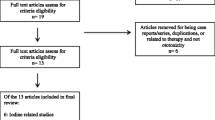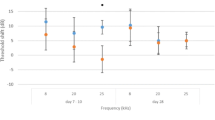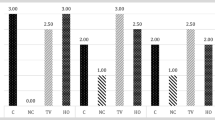Abstract
In this study, we investigated the effect of environmental pH on healing of acute rat tympanic membrane perforations. Twenty Wistar albino rats were divided into four groups and used in the study. A large myringotomy was performed in the posteroinferior quadrants of both tympanic membranes. In left ears, topical pH 4 standard calibration solution was used in groups 1 and 3, and pH 7 standard calibration solution was used in groups 2 and 4. Right ears served as controls, and allowed for spontaneous healing. The solutions were applied for 2 days in groups 1 and 2, and for 7 days in groups 3 and 4. Healing was assessed by macroscopic closure of the tympanic membrane perforation, and histopathological analysis of lamina propria edema, neovascularization, inflammatory cells, and fibroblastic reaction in the temporal bones. pH 7 and pH 4 groups were similar for macroscopic closure of perforation on day 2; however difference was significant on day 7. The fibroblastic activity was significantly less on days 2 and 7 in pH 4 group. On day 7, there were significant differences between pH 4 and pH 7, and pH 7 and control groups for inflammatory cell infiltration. In conclusion, clinical and histopathological results of this study indicated that acidic environmental pH speeded up and shortened wound-healing process. By building up optimum environmental pH, a healthy healing may be achieved in acute tympanic membrane perforations.


Similar content being viewed by others
References
Johnson AP, Smallman LA, Kent SE (1990) The mechanism of healing of tympanic membrane perforations. A two-dimensional histological study in guinea pigs. Acta Otolaryngol 109:406–415
Araújo MM, Murashima AA, Alves VM et al (2014) Spontaneous healing of the tympanic membrane after traumatic perforation in rats. Braz J Otorhinolaryngol 80:330–338
Schneider LA, Korber A, Grabbe S et al (2007) Influence of pH on wound-healing: a new perspective for wound-therapy? Arch Dermatol Res 298:413–420
Rippke F, Schreiner V, Schwanitz HJ (2002) The acidic milieu of the horny layer: new findings on the physiology and pathophysiology of skin pH. Am J Clin Dermatol 3:261–272
O’Meara S, Cullum N, Majid M et al (2000) Systemic review of wound care management: (3) antimicrobial agents for chronic wounds; (4) diabetic foot ulceration. Health Technol Assess 4:1–237
Stewart CM, Cole MB, Legan JD et al (2002) Staphylococcus aureus growth boundaries: moving towards mechanistic predictive models basedon solute-specific effects. Appl Environ Microbiol 68:1864–1871
Runeman B, Faergemann J, Larko O (2000) Experimental Candida albicans lesions in healthy humans: dependence on skin pH. Acta Derm Venereol 80:421–424
Kurabayashi H, Tamura K, Machida I et al (2002) Inhibiting bacteria and skin pH in hemiplegia: effects of washing hands with acidic mineral water. Am J Phys Med Rehabil 81:40–46
Robbins SL (1994) Robbins pathologic basis of disease. In: Robbins SL, Cotran RS, Kumar V (eds) Inflammation and repair. Saunders Company, Philadelphia, pp 52–92
Siervo S (2008) Suturing techniques in oral surgery. Quintessence Publishing, Milano
Şenol M (1995) Wound healing. T Clin J Dermatol 5:49–53
Roberts G, Hammad L, Collins C et al (2002) Some effects of sustained compression on ulcerated tissues. Angiology 53:451–456
Shukla VK, Shukla D, Tiwary SK et al (2007) Evaluation of pH measurement as a method of wound assessment. J Wound Care 16:291–294
Mercier RC, Stumpo C, Rybak MJ (2002) Effect of growth phase and pH on the in vitro activity of a new glycopeptide, oritavancin (LY333328), against Staphylococcus aureus and Enterococcus faecium. J Antimicrob Chemother 50:19–24
Greener B, Hughes AA, Bannister NP et al (2005) Proteases and pH in chronic wounds. J Wound Care 14:59–61
Author information
Authors and Affiliations
Corresponding author
Ethics declarations
Conflict of interest
The authors do not have any conflicts of interest. No financial support was obtained for this study.
Rights and permissions
About this article
Cite this article
Akkoc, A., Celik, H., Arslan, N. et al. The effects of different environmental pH on healing of tympanic membrane: an experimental study. Eur Arch Otorhinolaryngol 273, 2503–2508 (2016). https://doi.org/10.1007/s00405-015-3859-3
Received:
Accepted:
Published:
Issue Date:
DOI: https://doi.org/10.1007/s00405-015-3859-3




